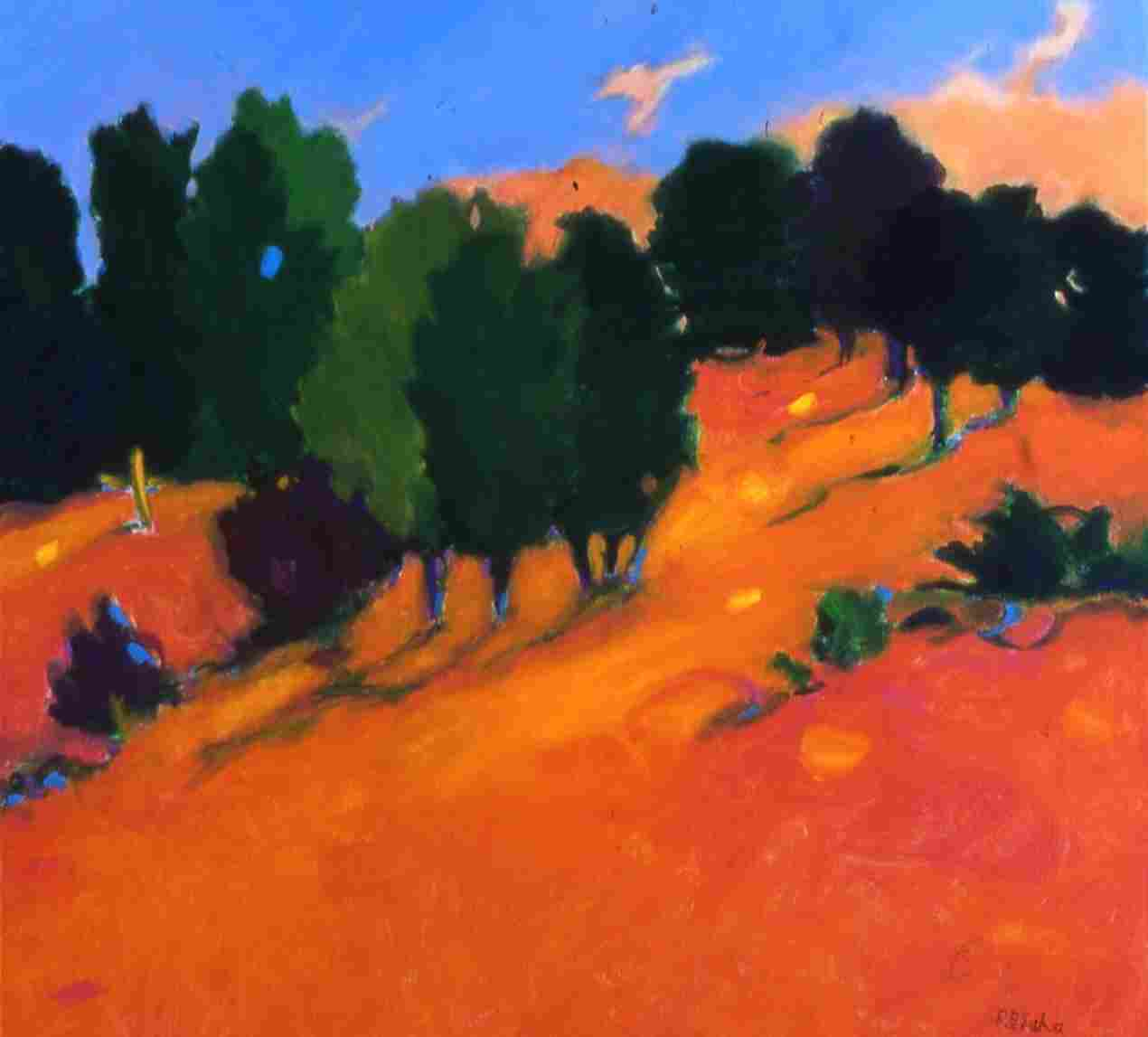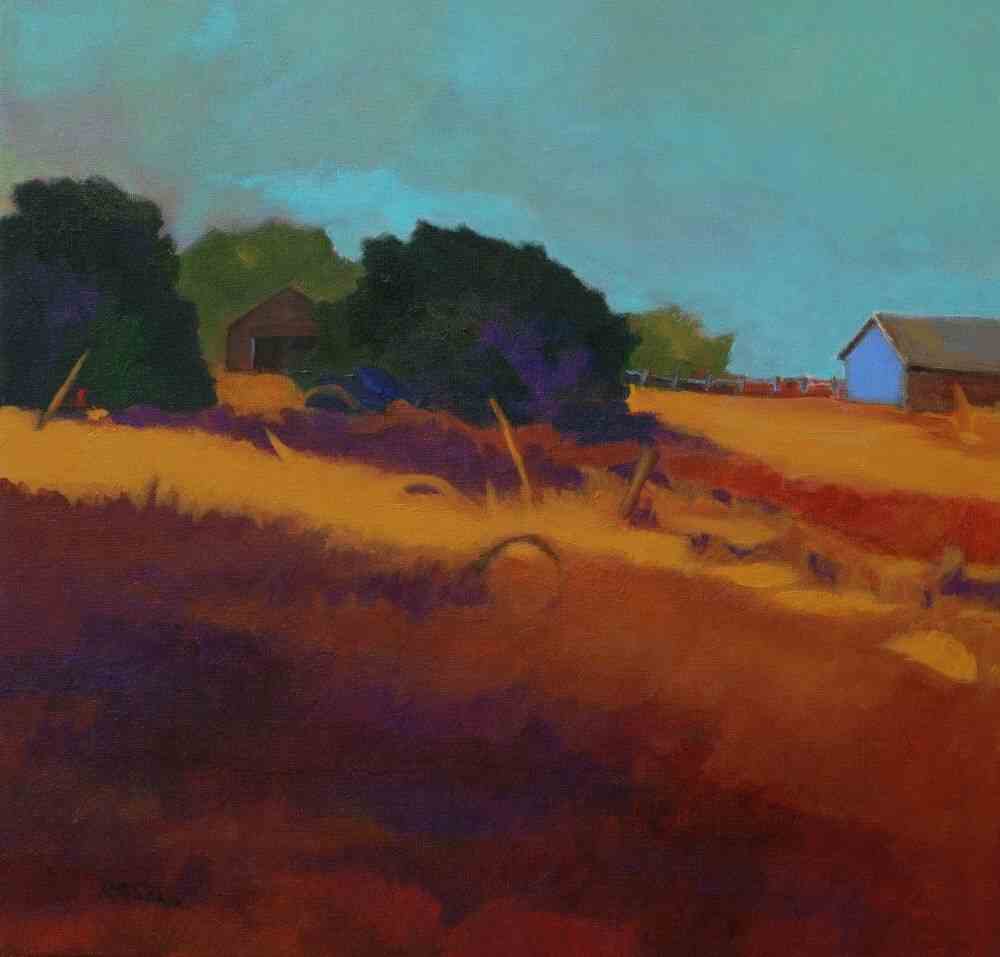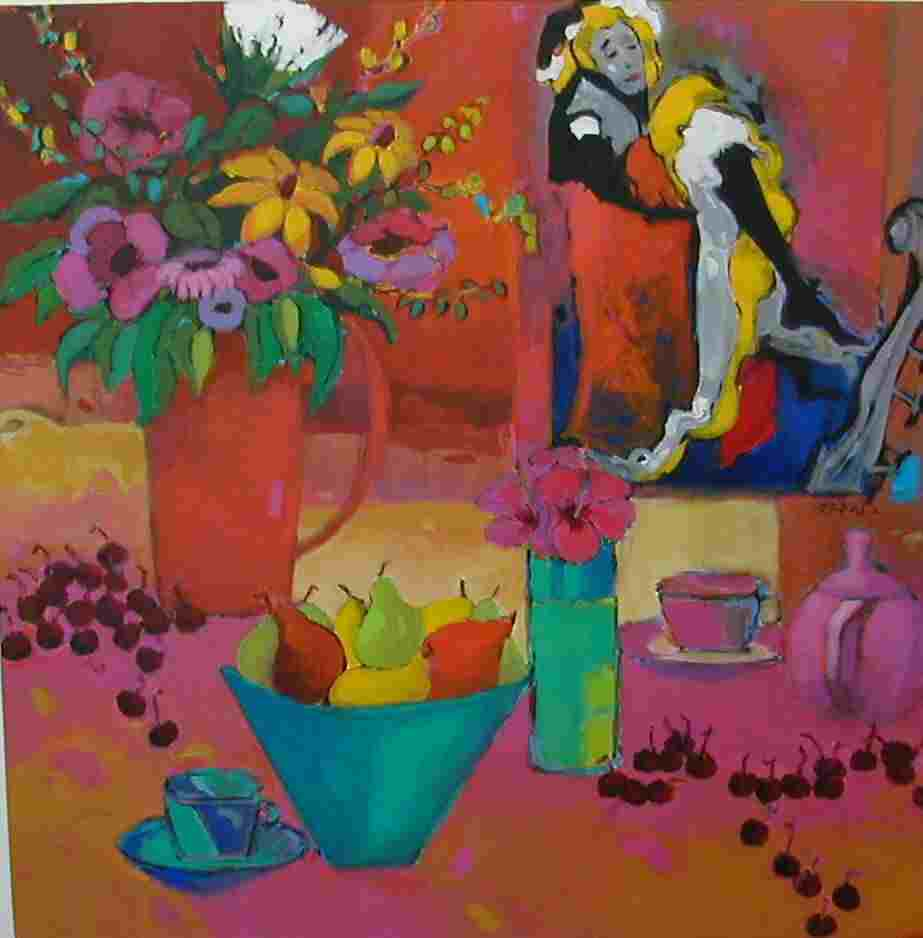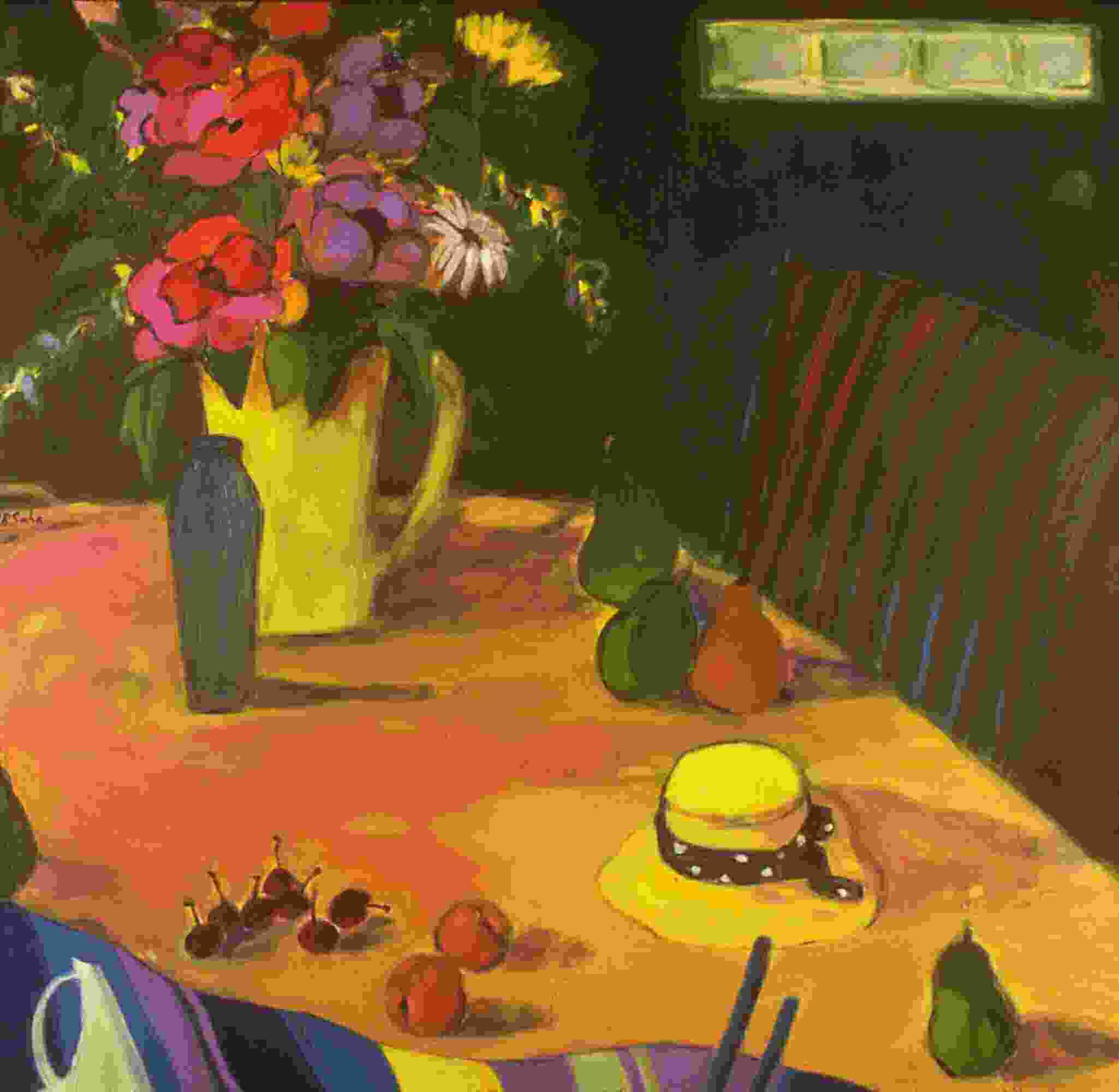The
artwork of Raka B. Saha grabs your attention and heart from
the moment you encounter it. Both her portraits and landscapes
are informed by her unusual personal history, her intellect
and humanity. Despite a chimerical colour palette reminiscent
of Fauvism, her paintings remain approachable and still ethereal.
Ms.
Saha, a native of Calcutta, India, pursued an education and
career in biochemistry and microbiology. Her parents, a cardiologist
and a mathematician, were forward thinking individuals. While
recognizing their child’s love and affinity for the visual
arts, and encouraging it by taking her to art shows and entering
her work in numerous children’s art competitions, they
didn’t want their daughter to be dependent on a husband’s
income. So they decided a good education would the best means
to secure that outcome.
Working
as a biochemist for most of her life, Saha painted on weekends
until she could finally immerse herself in her first love. She
says, “I paint like a scientist.” In the book, The
Making of an Atom Bomb, she read that the same part of
the brain is responsible for stimulating the artistic and scientific
imaginations. “I like to experiment with my paintings.
I use colours that I like visually. I do not have to know in
a painting what is the right way, what is the wrong way. I will
just be brave . . . the surface is mine to explore.”

Her
palette reflects the palpable colours of her native India: the
saturated blues, magentas, golds and reds of especially its
fabrics and flora. But it was only after having painted for
many years it was brought to Saha’s notice that her colour
scheme compares to
Fauvism, that short-lived movement from 1898
to 1908 that encouraged the aggressive application of colour.
“I painted only because colour acted as an emotional force
in my vision. Colour created luminous light. Good friends who
are artists tell me my colour wheel is slightly turned. But
it is too late for me to be confined. I call my style Post Post
Impressionism.”
Colour
and composition are the two most important elements in Saha’s
painting. She says she spends more time contemplating a composition
than actually painting it. She enjoys painting on square canvases
because the shape acts as a “block out of the main theme,”
a vignette of a large picture. Despite colours that are sometimes
unrealistic and clashing, tranquility and serenity prevail.
Saha explains she achieves this “through simple arrangements
of flowers and fruits. Subject matter indicates the ‘atmosphere’
of a painting, along with the colour. A blood red colour on
a flower is much more tranquil than a blood red human body.”

Her
arresting landscapes pit unnaturally calm and blue skies against
the almost violent, darkness of the earth, in paintings whose
titles presage a looming climatic event such as Storm on
the Bend. Having lived in Georgia for 8 years, she became
enamoured with the dark red clay of the area and incorporated
it into the earth tones of her landscapes, while the technicolour
skies were inspired by trips to Provence and from vistas outside
the large bay window of her studio in Urbana, Maryland. The
idea for Storm on the Bend was born when the artist
serendipitously observed a huge piece of farm equipment creating
a miasma of dust on the horizon. “I do not copy nature
as I see it. I rather get stimulated from it and create my own
climates.”
 In her still life Saha memorializes the artists she has admired
by including a memento or artifact singularly associated with
the represented artist. She refers to them as homage paintings.
In Lautrec in My Studio we have a figure executed in
his style but ensconced in a setting decidedly of Saha’s
creation. The viewer will observe that against the artist’s
florid colouration Lautrec’s palette seems tame and out
of place. The work also includes the iconic can-can dancer reified
in the colours of Lautrec’s original, but the addition
of cello neck and frets lend a sense of whimsicality to the
on-going dance.
In her still life Saha memorializes the artists she has admired
by including a memento or artifact singularly associated with
the represented artist. She refers to them as homage paintings.
In Lautrec in My Studio we have a figure executed in
his style but ensconced in a setting decidedly of Saha’s
creation. The viewer will observe that against the artist’s
florid colouration Lautrec’s palette seems tame and out
of place. The work also includes the iconic can-can dancer reified
in the colours of Lautrec’s original, but the addition
of cello neck and frets lend a sense of whimsicality to the
on-going dance.
 Gauguin’s
Hat shows the artist’s iconic straw boater tossed
upon a table. Here the paean to the artist is incorporated in
style, colour and subject, an honorarium without distraction.
A mini clerestory window to the right seems the only light source
yet the table is brightly lit from the left. We await the return
of our visitor.
Gauguin’s
Hat shows the artist’s iconic straw boater tossed
upon a table. Here the paean to the artist is incorporated in
style, colour and subject, an honorarium without distraction.
A mini clerestory window to the right seems the only light source
yet the table is brightly lit from the left. We await the return
of our visitor.
In
The Visit from the Gleaners, an homage to Jean- Francois
Millet’s 1848 work, Saha wanted to commemorate the hardworking
women by inviting them into her studio where their toil is reciprocated
and appreciated by the endeavours of the artist. They bend away
from the canvas and enter the studio space amid the floating
flower pots, red and pink pears, and striped cloths as both
foreground and backdrop. The stripes are a recurrent theme that conjures the patterned
backgrounds of Matisse’s interiors, himself a Fauvist.
The stripes are a recurrent theme that conjures the patterned
backgrounds of Matisse’s interiors, himself a Fauvist.
Transmitted
Light is both breathtakingly beautiful and haunting. It
is a self-referencing, straight ahead still life, but you would
be hard pressed to establish the time of day or light source.
Is it reflected sunlight through the blue glass that imbues
the room with its cast or is it the cold, unadulterated blue-white
light of the evening moon?  There
is no evidence of any natural light or neutral colour except
one lone whitish flower, itself taking on a slight haze. The
space is almost surreal as the wall gives way to what appears
to be the outdoors, the yard.
There
is no evidence of any natural light or neutral colour except
one lone whitish flower, itself taking on a slight haze. The
space is almost surreal as the wall gives way to what appears
to be the outdoors, the yard.
Saha
brings to her compositions the same instincts that determine
her colour choices. By following her heart and muse, this self-taught
artist continues to readily engage the viewing public by producing
artworks that vibrate with emotion while staying true to her
vision. This vision is an amalgam of her scientific study, her
rich cultural heritage and innate desire to express herself
through painting. Saha says, “I believe that art must
show a certain beauty . . . and the essence of beauty is the
idea; the vehicle of the idea is the form. My paintings are
very personal reactions to what I see; they are visual expressions
of my thought processes; they are not direct illustrations of
nature. I get stimulated from it and create my own climates.
I want my work to be understood by the layman and the cognoscente.
I paint for sheer joy.”
Saha’s
paintings are currently on exhibition at the prestigious Foxhall
Gallery in Washington and the
Huff Harrington Fine Art Gallery
in Atlanta.
All images
© Raka B. Saha